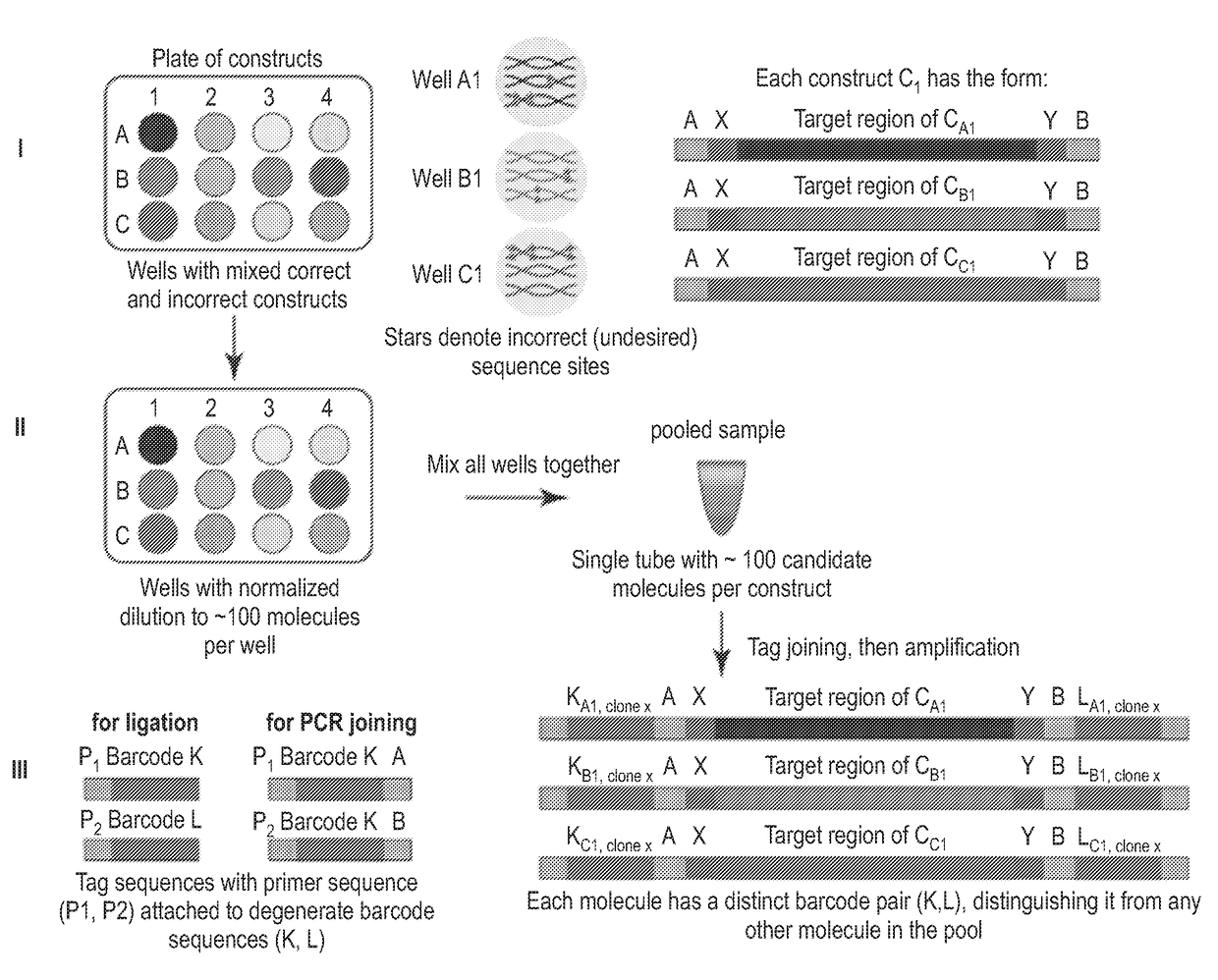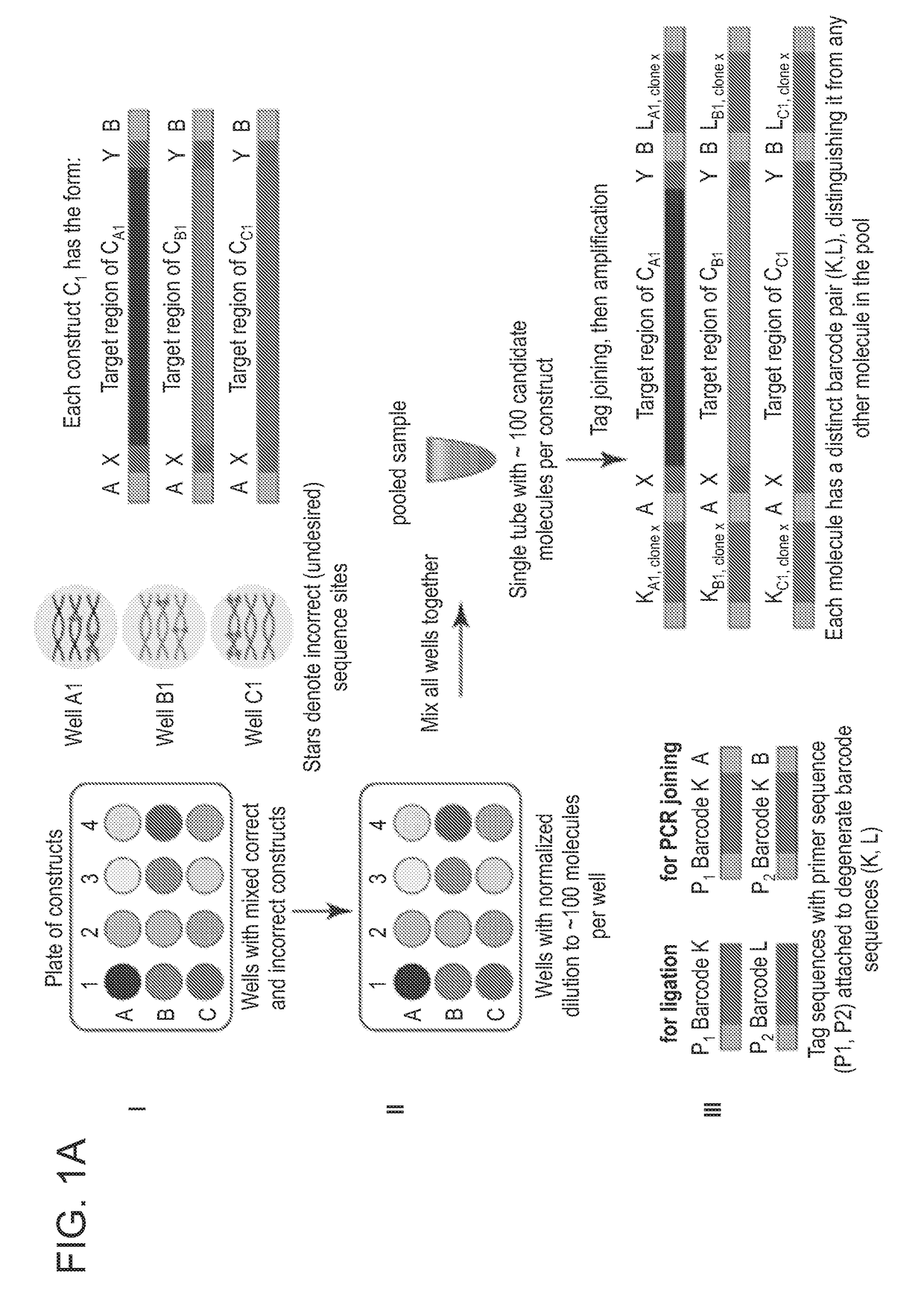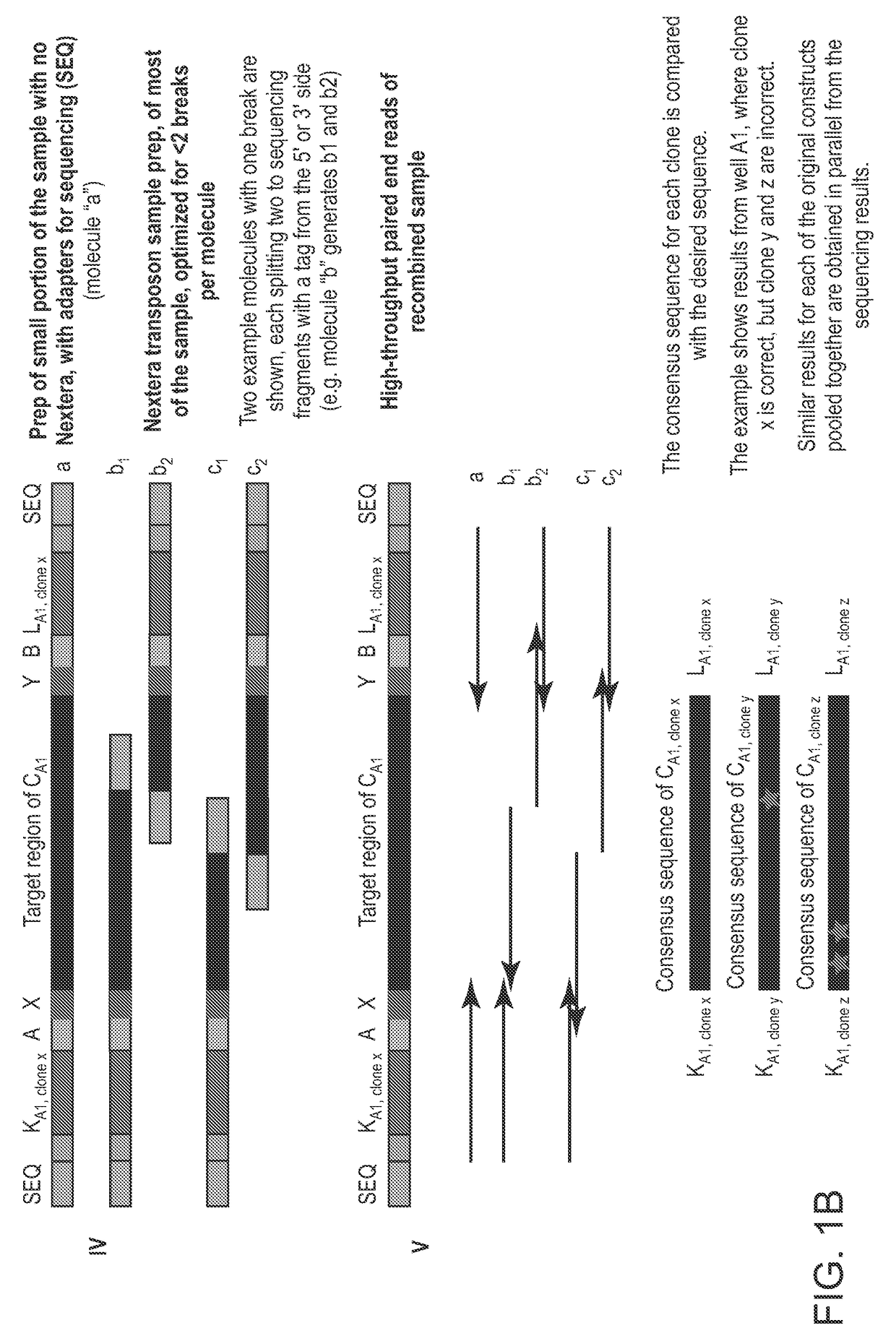Methods for Nucleic Acid Assembly
- Summary
- Abstract
- Description
- Claims
- Application Information
AI Technical Summary
Benefits of technology
Problems solved by technology
Method used
Image
Examples
example 1
[0161]The methods described herein and illustrated in FIG. 1A-C allow for the identification of target nucleic acids having the correct desired sequence from a plate of having a plurality of distinct nucleic acid constructs, each plurality of nucleic acid constructs comprising a mixture of correct and incorrect sequences.
[0162]In step I, FIG. 1A, a plurality of constructs (CA1-CAn, . . . CN1-CNn) is provided within separate wells of a microplate, each well comprising a mixture of correct and incorrect sequence sites. Each construct can have a target region flanked at the 5′ end with a construct specific region X and a common region or adaptor A and at the 3′ end a construct specific region Y and a common region or adaptor B.
[0163]In step II, FIG. 1A, each of the construct mixture can be diluted to a limited number of molecules (about 100-1000) such as each well of the plate comprise normalized mixture of molecules. Each of the dilutions can be mixed and pooled together into one tube...
example 2
[0168]The foregoing methods of in vitro cloning can be extremely effective at distinguishing individual source molecules. A consensus sequence (from all the source molecules of one construct) can have small competing signals from individual source molecules with errors at a position. In some embodiments, the consensus sequence can be compared with the trace from that individual source molecule with the error. In most of the cases, the source molecule can be cleanly called as an error, with no competing signal from the (large) background of the correct base. FIGS. 7A and 7B illustrate an example of effective source molecule separation. On the right side is a consensus trace of all reads of a particular construct at a certain location. As illustrated in FIGS. 7A-B, where there is a “mutation” or “error” signal, quite small relative to the whole population, that mutation / error stems from a single clone (source molecule). On the left side is a consensus trace of all reads of the same co...
example 3
[0169]FIG. 8 illustrates the use of coded barcodes to isolate or fish out nucleic acids having the predetermined sequences. In an exemplary embodiment, the 5′ barcode is 14N and the 3′ barcode is 20N. Primers (also referred herein as fish-out primers) were used for isolation of targets (chip-110.0001) as illustrated in FIG. 8. Each barcode pair (left barcode is in bold as illustrated below) was used to make primers. Clone A uses primer sequences 1 & 2; clone B uses 3 & 4, etc . . . . The target molecule was recovered very cleanly using PCR with the fish-out primers.
SEQ ID NO: 1, SEQ ID NO: 2)chip-110.0001_ACTCACCTCGTTTC_CCTTATAAGCATGTCTCATAPrimer 1(SEQ ID NO: 3)AGAGACAGACTCACCTCGTTTCPrimer 2(SEQ ID NO: 4)GAGACAGTATGAGACATGCTTATAAGG(SEQ ID No. 5, SEQ ID NO: 6)chip-110.0001_GCCGCCGCTGGGGC_CCTCCCCACGCTCTCTAGCCPrimer 3(SEQ ID NO: 7)GGCCGCCGCTGGGGCPrimer 4(SEQ ID NO: 8)ACAGGGCTAGAGAGCGTGGGGAGG(SEQ ID NO: 9, SEQ ID NO: 10)chip-110.0001_GGAGCGATCACCAT_TAGACGTTCATGGTACATACPrimer 5(SEQ ID NO...
PUM
| Property | Measurement | Unit |
|---|---|---|
| Energy | aaaaa | aaaaa |
Abstract
Description
Claims
Application Information
 Login to View More
Login to View More - R&D
- Intellectual Property
- Life Sciences
- Materials
- Tech Scout
- Unparalleled Data Quality
- Higher Quality Content
- 60% Fewer Hallucinations
Browse by: Latest US Patents, China's latest patents, Technical Efficacy Thesaurus, Application Domain, Technology Topic, Popular Technical Reports.
© 2025 PatSnap. All rights reserved.Legal|Privacy policy|Modern Slavery Act Transparency Statement|Sitemap|About US| Contact US: help@patsnap.com



